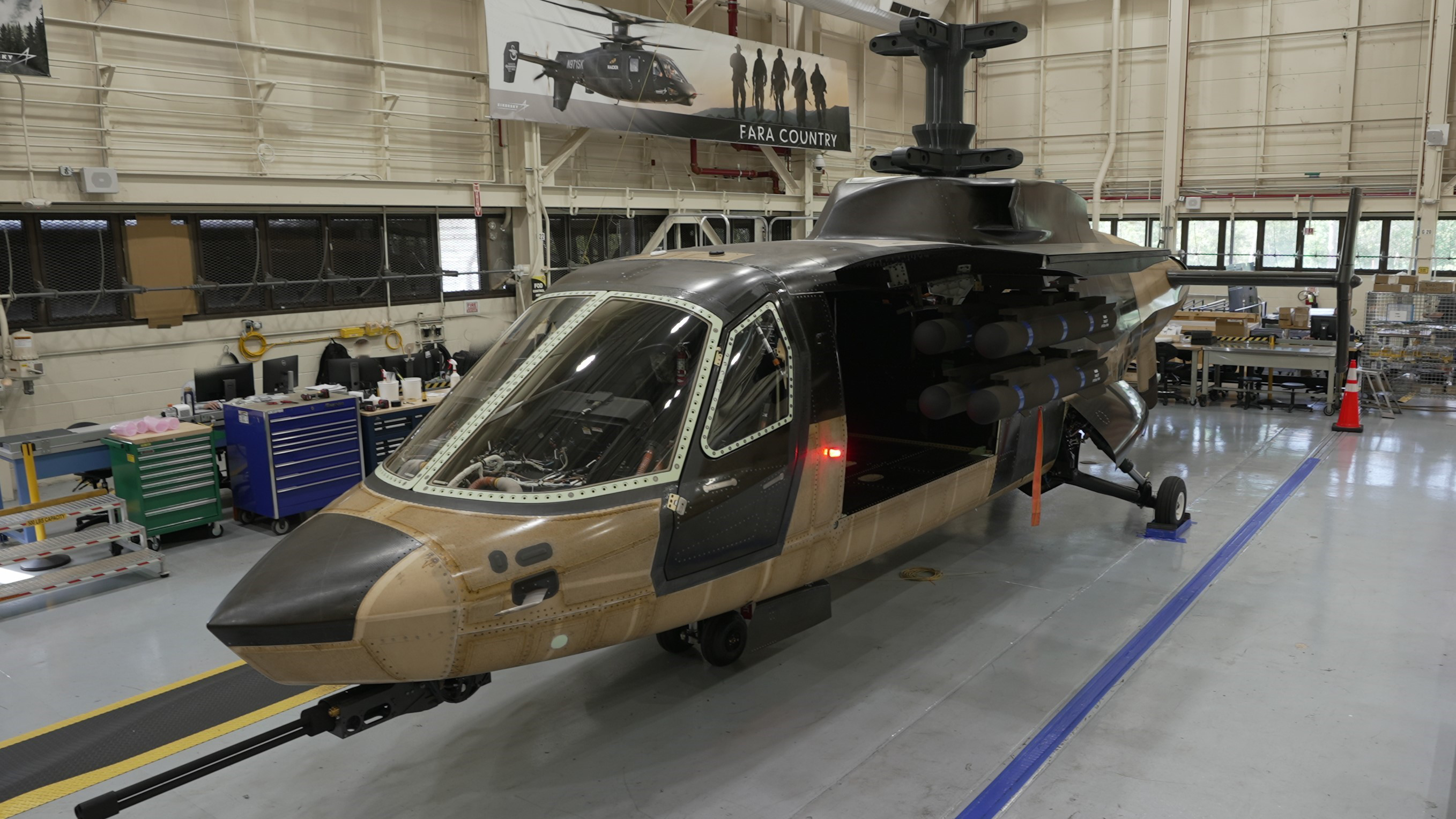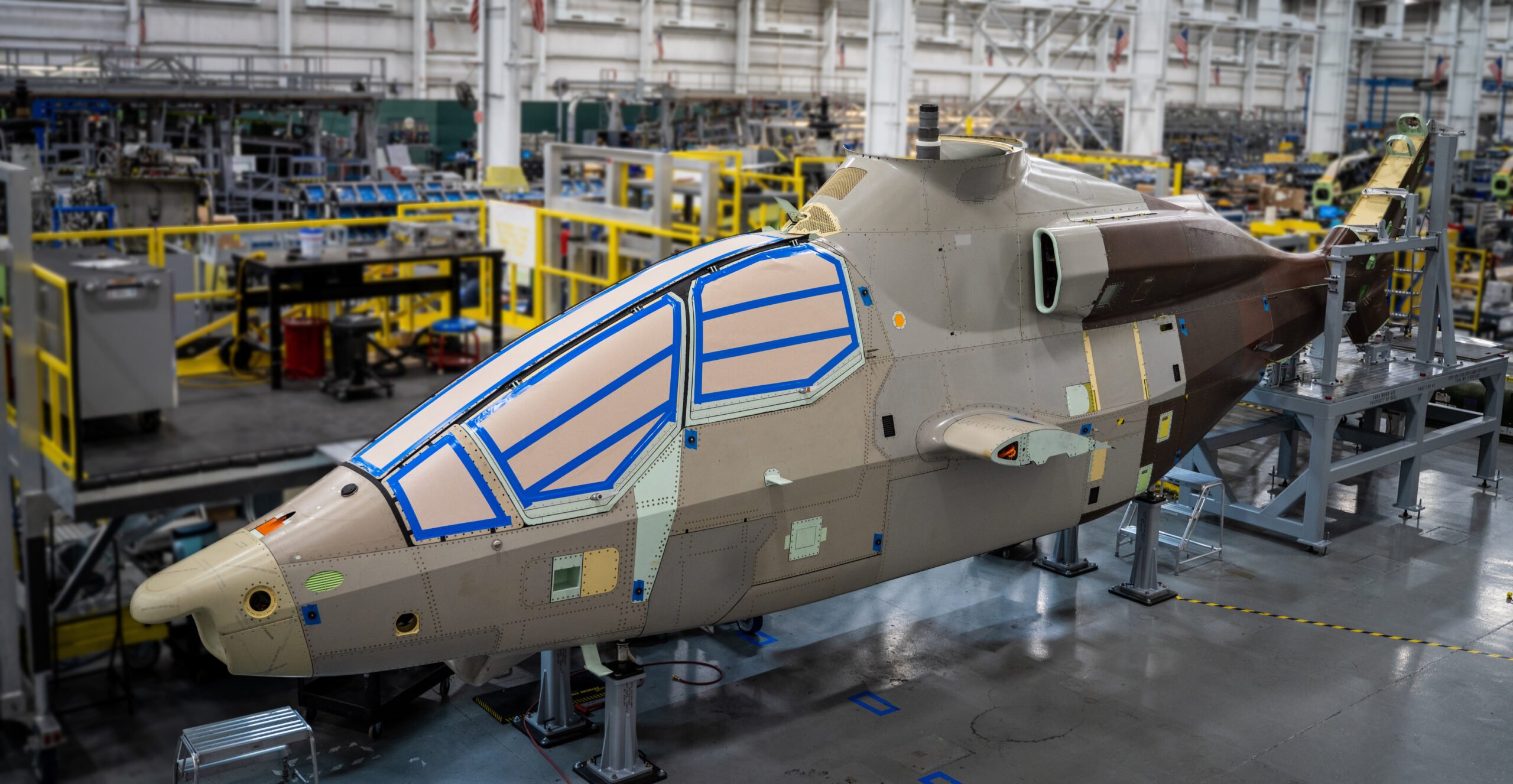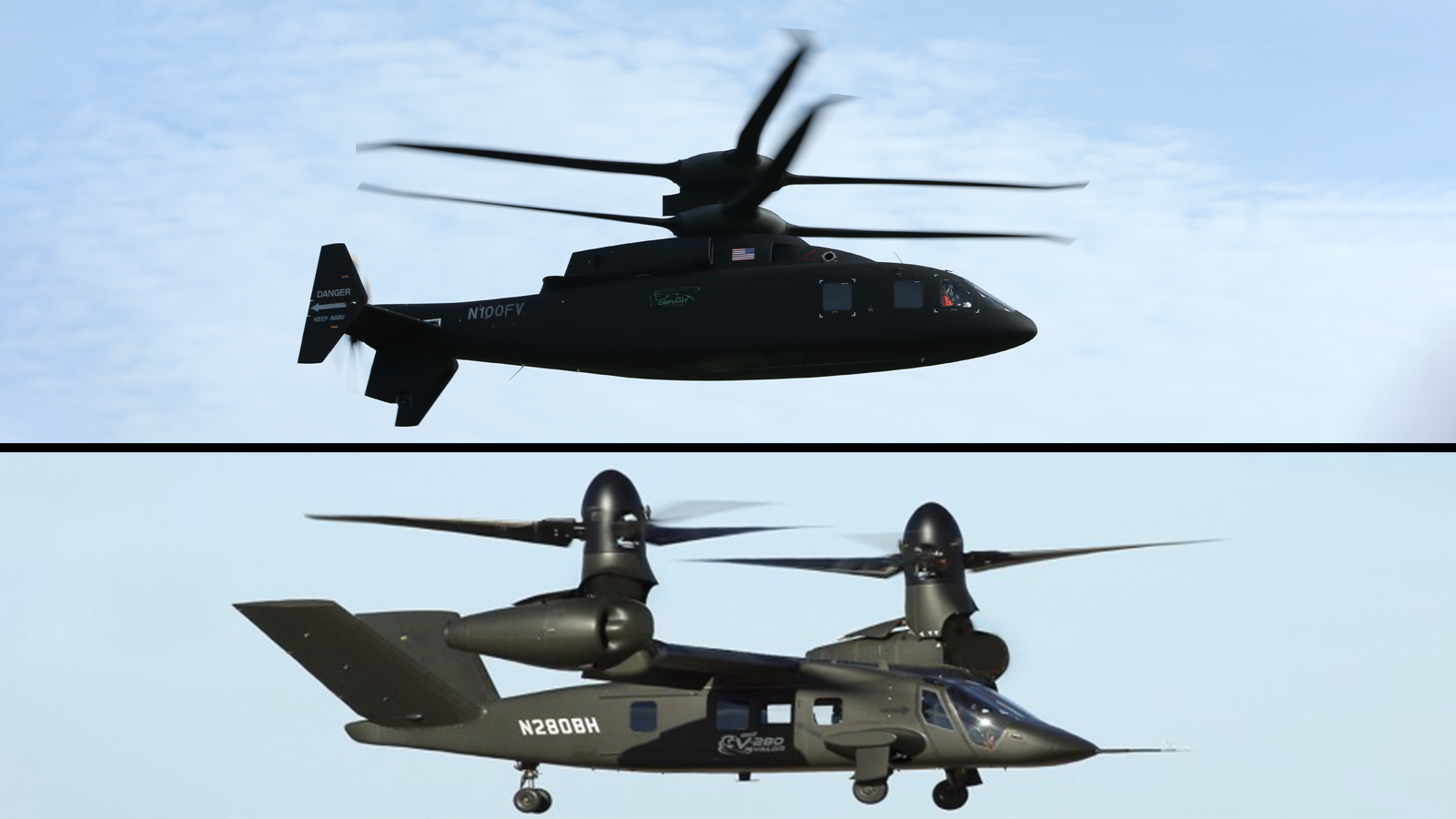
Sikorsky’s competitive prototype for the Army’s Future Attack Reconnaissance Aircraft now sits at 90% complete. (Photo courtesy of Sikorsky)
WEST PALM BEACH, Fla.: Sikorsky’s competitive prototype for the Army’s future scout helicopter competition is currently 90% complete, the company says, but its final design is still being informed by a little brother, the S-97 Raider.
Sikorsky’s S-97 Raider is about four-fifths the size of the company’s prototype for the Army’s Future Attack Reconnaissance Aircraft (FARA), known as Raider X. But the smaller bird has allowed Sikorsky’s design team to collect real-world data points and answer specific design questions to inform the actual prototype.
“If we didn’t have an S-97, we’d have to wait another year-plus to be able to fly those data points and to inform our production design,” Pete Germanowski, Sikorsky’s chief engineer for the FARA program, told reporters during a roundtable last week in West Palm Beach, Fla. “We’re able to go get answers to our questions today, which from an engineering point of view, gives me a little more certainty in terms of what I’m designing and allows us to make more informed decisions and choices earlier in the process.”
RELATED: ‘A recipe for the parts’: Bell plans factory of the future with FARA, FLRAA dreams
According to Jay Macklin, the company’s business development director for Army programs and innovations, the S-97 still flies “monthly” for data collection purposes. Germanowski said it collects a range of data, such as maneuverability and agility assessments or aerodynamic performance work.
“We plan on continuing that to expand the envelope, to continue to feed the design, the information on CP [competitive prototype],” Macklin said. The company expects first flight of Raider X to be in the fall of 2023.
Sikorsky, a subsidiary of Lockheed Martin, and Bell Textron are competing against each other for both FARA and the Army’s Future Long-Range Assault Aircraft (FLRAA), for which Sikorsky is partnered with Boeing. During a reporters’ visit to Bell’s facilities in March, Bell executives said the company was 80% finished with their own FARA offering, called the Bell 360 Invictus. According to fiscal 2023 budget books, the Army plans to make the much-anticipated engineering and manufacturing contract award in FY25.

The Bell 360 Invictus sits at the company’s assembly center in Amarillo, Texas. (Courtesy of Bell)
The two aircraft are among the Army’s top 35 signature modernization priorities as it develops platforms designed to take on near-peer adversaries. Sikorsky hosted a small group of reporters in Florida in late June for a flight demo of the S-97 Raider and to see the company’s prototype for FARA, Raider X. (Like other publications, Breaking Defense accepted travel accommodations from Sikorsky for the visit.)
With the competitive prototype at 90% complete, Sikorsky’s Germanowski said a majority of its subsystems are installed and currently undergoing testing. Additionally, the company has 98% of the parts on hand, according to Macklin. The Raider X, like Bell’s Invictus, is waiting for the Army’s Improved Turbine Engine Program, which should be delivered to FARA competitors in November.
While the S-97 and Raider X prototype look very similar, the Raider X has some slight design tweaks beyond size. The biggest change is that the exhaust on the Raider X faces downward, whereas the S-97’s exhaust was in the center of the tail and pointed up.
“The Army’s definition of the threat environment has changed since we built the S-97. Now it’s more favorable to have the exhaust pointing down,” Germanowski said, saying he couldn’t get into further details about why that’s the case except that it comes from requirements provided by the Army.
Sikorsky also announced in April that it had built a second fuselage of its Raider X design to accelerate risk reduction for increment one, the first production phase if it wins the contract. Next month, that fuselage will be put into a “test fixture” and will complete Sikorsky’s airframe structural testing, Germanowski said. That will clear the airframe for flight and give the company more test data as it works on its preliminary design for its increment one variant, including where they might be able to save on weight and cost.
“As we’re optimizing the fuselage for the next version of FARA, it’s informed by real test results for the prototype that we built,” Germanowski said.
Pitching Commonality
While the Army inches forward with the FARA and FLRAA competitions, Sikorsky is pitching the service on the design commonalities between its pair of offerings for future rotorcraft. In both cases, Sikorsky is submitting two helicopters with coaxial rotors on top and a propeller in the back, rather than a conventional tail rotor.
“The Army has an opportunity now, between the FARA and the FLRAA, to have a common platform,” Macklin said.
Sikorsky argues that the commonalities would ease issues across a broad range of an aircraft’s life, from parts to pilot training to sustainment, potentially saving the service both time and money.

The Sikorsky-Boeing SB-1 Defiant (top) and the Bell V-280 Valor (below). (Photo Credit: Sikorsky, Bell)
“The commonality between the two platforms — it’s not just the mechanics of it, you know, the actual parts. It’s really the training — think about now you only have one training curriculum that you have to go through,” said Andy Adams, vice president of future vertical lift at Sikorsky, who acknowledged, of course, the size difference between the S-97 and Raider X.
Sikorsky is also pitching the Army the benefits of commonality on other fronts. For example, Army helicopter mechanics currently specialize in the repair of specific helos, such as the UH-60 Black Hawk of AH-64 Apache. With the common designs, Macklin said, the repairers could more easily learn to do maintenance on both aircraft.
“There’s that there really is an opportunity to try to bring that together,” Macklin said. “This is once in a generation that you have the opportunity … to actually get to realize some of those efficiencies.”
In a ‘world first,’ DARPA project demonstrates AI dogfighting in real jet
“The potential for machine learning in aviation, whether military or civil, is enormous,” said Air Force Col. James Valpiani. “And these fundamental questions of how do we do it, how do we do it safely, how do we train them, are the questions that we are trying to get after.”


























